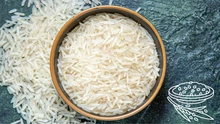
Turnip greens and mustard greens are two types of leafy vegetables that are often used in southern cooking and have many health benefits. However, they have some significant differences as well. First, let's look at the appearance of these greens.
Turnip greens are a deep green color and have large, slightly fuzzy leaves that can be either smooth or wrinkled. They have a slightly bitter taste and a crunchy texture when cooked. Mustard greens, on the other hand, have smaller, more delicate leaves that are a bright yellow or green color. They have a slightly spicy flavor and a tender texture when cooked.
Turnip greens and Mustard greens are a type of vegetable that is native to the Mediterranean region. Both turnip greens and mustard greens belong to the family of cruciferous vegetables, which also include broccoli, kale, and cabbage. Turnip greens are typically a deep green color, while mustard greens can range in color from light green to dark green. Turnip greens can be eaten raw or cooked, while mustard greens are typically cooked before being eaten.
Both turnip greens and mustard greens are high in nutrients, but they differ in their specific nutrient content. Turnip greens are a good source of vitamins A, C, and K, as well as calcium and iron. They also contain a high number of antioxidants and have been shown to have anti-inflammatory properties. Mustard greens, on the other hand, are high in vitamins A, C, and E, as well as calcium, potassium, and iron. They also contain a compound called sulforaphane, which has been shown to have cancer-fighting properties.
When it comes to cooking, turnip greens and mustard greens can be used in a variety of dishes. Turnip greens are often used in soups and stews, as well as sautéed or braised. They can also be eaten raw in salads. Mustard greens are often used in stir-fries and braises, as well as in soups and stews. They can also be eaten raw in salads or as garnish.
One of the main differences between turnip greens and mustard greens is the way they are prepared. Turnip greens are typically cooked for a longer period of time to soften the leaves, while mustard greens can be cooked for a shorter amount of time to retain their crunch. This means that turnip greens have a softer texture when cooked, while mustard greens have a crunchier texture.
Nutrient Composition of Cooked Turnip Greens and Mustard Greens:
Turnip greens and mustard greens are both leafy green vegetables that are high in nutrients and offer numerous health benefits. However, they do have some differences in their nutrient content.
Turnip greens are an excellent source of vitamins A, C, and K, as well as fiber, calcium, and iron. One cup of cooked turnip greens contains approximately:
-
34 calories
-
6 grams of carbohydrate
-
3 grams of protein
-
3 grams of fiber
-
489% of the daily value for vitamin A
-
65% of the daily value for vitamin C
-
95% of the daily value for vitamin K
-
9% of the daily value of calcium
-
6% of the daily value of iron
Mustard greens are also a good source of vitamins A, C, and K, as well as fiber, calcium, and iron. One cup of cooked mustard greens contains approximately:
-
15 calories
-
3 grams of carbohydrate
-
2 grams of protein
-
2 grams of fiber
-
75% of the daily value for vitamin A
-
45% of the daily value for vitamin C
-
95% of the daily value for vitamin K
-
9% of the daily value of calcium
- 3% of the daily value of iron
Turnip Greens v/s Mustard Greens: Which is Healthier?
In summary, both turnip greens and mustard greens are both nutritious and flavorful vegetables that can be used in a variety of dishes and are high in vitamins A, C, and K, as well as fiber, calcium, and iron. However, turnip greens contain slightly more of these nutrients, as well as more calories and carbohydrates. While they do have some differences in appearance, flavor, and cooking methods, both are excellent choices for adding to your diet their nutrient content and health benefits.









